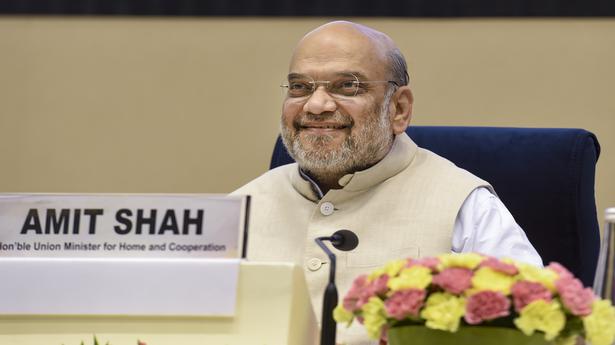
Amit Shah asks cooperative banks to focus on extending more long-term financing to agri sector
The Hindu
New Delhi Cooperation Minister Amit Shah on Saturday urged Agricultural and Rural Development Banks
i Cooperation Minister Amit Shah on Saturday urged Agricultural and Rural Development Banks (ARDBs) to extend more long-terms loans to the agriculture sector, including for irrigation projects and other infrastructure.
Cooperative banks should focus on providing loans for increasing the irrigated land in the country, he said.
To overcome the challenges of small farm holdings, the Minister asked cooperative banks to think how to operate such small farm fields with a cooperative spirit.
India has 49.4 crore acres of agriculture land, highest after the U.S. If the entire farm land is irrigated, India can feed the whole world, he added.
Addressing a national conference, Mr. Shah said, “If we look back and see the last 90 years journey of long-term financing through cooperatives and how it has percolated down, if you see the data, it has not grown.”
He noted that there are many hurdles in long-term financing and time has come to overcome them with a cooperative spirit.
He also said cooperative banks should not function as banks alone, but focus on other cooperative activities like setting up of agri infrastructure such as irrigation.

The Union Budget unveiled on February 1, 2025, has come at a time of unprecedented global uncertainty and a flagging domestic economy. The real GDP growth is estimated at 6.4% for 2024-25 and between 6.3-6.8% for 2025-26, a far cry from >8 percent growth required annually to make India a developed nation by 2047. While much attention has been devoted to the demand stimulus through income tax cuts, not enough is said about the proposed reforms in urban development, tariff rationalisation, and regulatory simplification aimed at making Indian cities and corporates more competitive. Since the majority of economic activity is located in cities (urban areas account for ~55% of GDP) and produced by large corporates (~40% of the national output and 55% of India’s exports), the above-mentioned reforms have a pivotal role in improving India’s trend growth rate. Below we unpack each reform.












